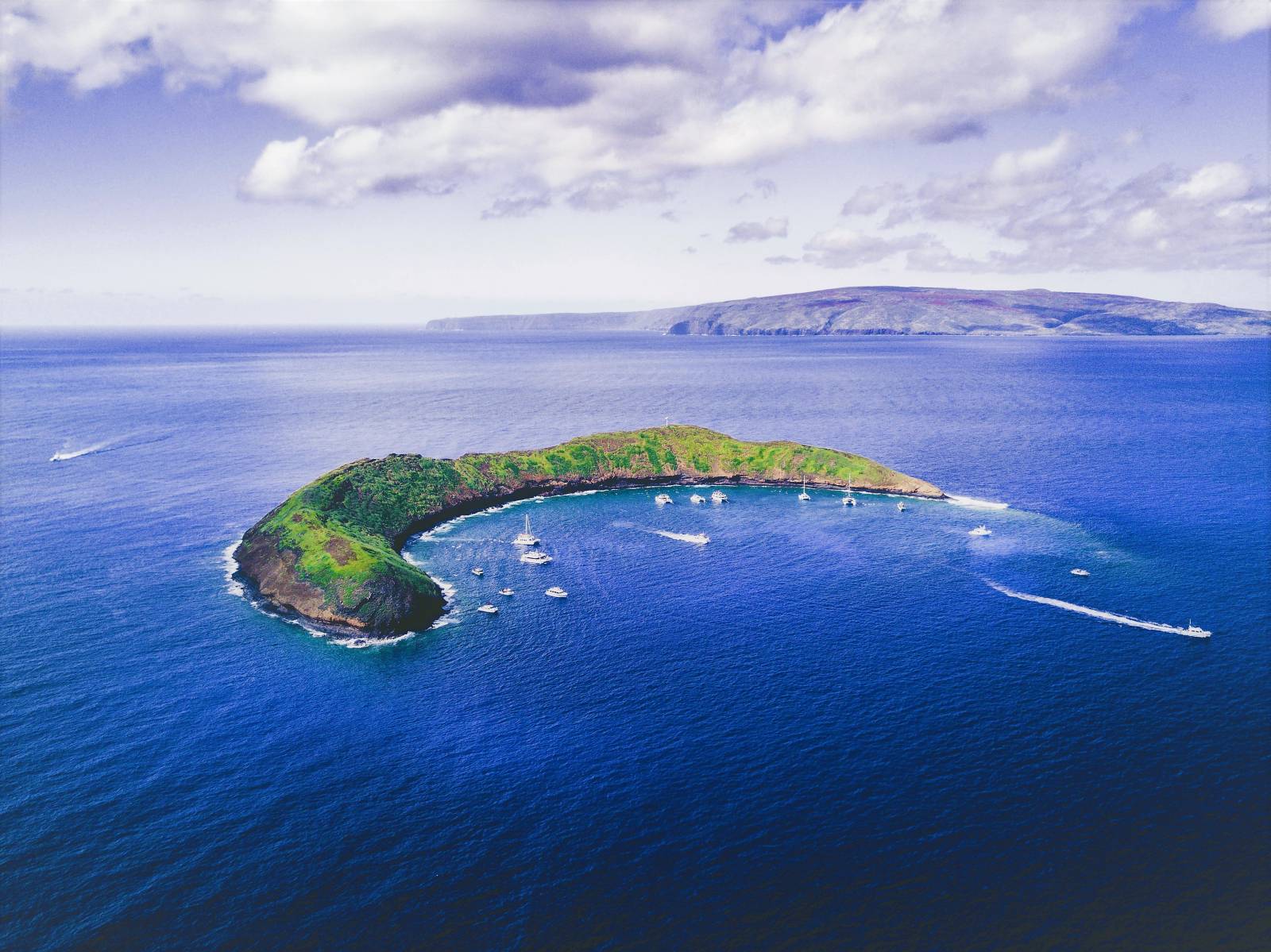It’s no wonder visitors and residents alike love to snorkel in the Hawaiian Islands – after all, we have an incredible variety of fish and other marine life, along with colorful coral and average water temperatures ranging from 74º F to 80º F year-round! For those who want to explore Hawaiʻi’s underwater scenery, Maui – and West Maui in particular – might just offer the perfect opportunity.
Maui’s prevailing trade winds blow from east to west, which means that our leeward/west-facing beaches tend to stay more sheltered than those on the windward/east side of the island. Our west side beaches also happen to feature fantastic views of Lānaʻi and Molokaʻi – and those islands in turn provide protection against large swells.
Below, you’ll find a list of some of west Maui’s most exceptional snorkeling locations. Each one is unique when it comes to factors like the depth of the water, the type of reef below the surface, and the sea life you might encounter there.
Black Rock
Known as Puʻu Kekaʻa (“rolling hill”) in Hawaiian, Black Rock is located at the north end of 3-mile Kāʻanapali Beach, which has been voted best beach in the U.S. by Tripadvisor. The snorkeling is easy to access there, from the sandy beach entrance near the Sheraton.
Swim out along Black Rock, and (if you’re adventurous and don’t mind water depths of up to around 25 feet) go around the point to the right to see a cove where a coral reef attracts tangs, puffer fish, trumpet fish, needlefish, and of course our state fish, the humuhumunukunukuapuaʻa. If you’re under water there in the winter months, listen for the songs of visiting humpback whales!
Early Hawaiians believed that Puʻu Kekaʻa was one of three leina in the islands – a location where the souls of the recently departed leapt into the afterlife to join their ancestors. If you visit Black Rock, be sure to stay until sunset to watch the nightly ceremony that involves the lighting of a torch at the end of the point, after which the torchbearer makes a symbolic cliff dive.

Honolua Bay
About a 20-minute drive north of Lāhainā leads to Honolua Bay, part of a marine life conservation district (which means that fish are plentiful there because fishing isn’t allowed). After you’ve parked along Honoapiʻilani Highway at the bay, take about a five-minute walk to find a beach made up of smooth stones.
Cliffs on both sides of Honolua protect it from the wind, keeping the water nice and glassy. When a north swell rolls in, the bay becomes one of Maui’s best surf breaks! But when ocean conditions are calmer, especially in mid-summer, it’s a great spot to see goatfish, peacock grouper, butterflyfish, unicorn fish, and honu (Hawaiian green sea turtles). A coral reef runs along each side of the bay; divers may opt for the deeper right side, but snorkelers may prefer the shallower left side.
Molokini
Okay, so this one is actually a volcanic islet located about 2.5 miles off of Maui’s southwest coast, but you access it by boat tours that leave from Lāhainā or Maʻalaea. Molokini has a crescent-shaped cove within, where the water reaches depths of 40 feet.
Also a seabird sanctuary, Molokini is known for its exceptionally clear waters and the many varieties of fish that call it home. Lucky snorkelers may even catch a glimpse of manta rays and moray eels on a visit there! And getting to Molokini is half the fun – tour companies like PacWhale Eco-Adventures and Trilogy offer sailing adventures of all different types and lengths.

Kapalua Bay
The Travel Channel has named it the best beach in America, and Conde Nast Traveler has named it the best beach in the world – but Kapalua Bay, about 10 miles north of Lāhainā, is just as beautiful below the surface as it is from land.
It’s easy to swim out anywhere in the sandy midsection of Kapalua Bay to the lava rock formations on either side, where you can see butterflyfish, parrotfish, triggerfish, humu, and honu. Calm waters also make it accessible for kids and less confident snorkelers.
On top of everything else, Kapalua Bay has a parking lot, restrooms, and showers. And between snorkeling sessions, you can relax on the beach and appreciate the spectacular surroundings.
Olowalu/Coral Gardens
Located near mile marker 14 on Honoapiʻilani Highway between Maʻalaea and Lāhainā, Coral Gardens can be accessed from a sandy beach with shallow water and generally calm conditions – so it’s ideal for beginners. If you’re a more adventurous snorkeler, though, find a sand channel and navigate as far as you’d like through the interesting lava rock and coral passageways.
Coral Gardens is home to not only all kinds of fish, but sea turtles, manta rays, and the occasional black tip reef shark. In the winter months, you might be able to hear and see humpback whales underwater there!

Final Notes About Maui Snorkeling
Ocean conditions vary throughout the year at any given snorkel spot, but mornings are most likely to have calm, clear waters at any time of year in any location. And remember: don’t damage the reef by standing on it, make sure you’re wearing reef-safe sunscreen (it’s a state law these days), and always use the buddy system!
Great snorkeling is just one of the many things that make this island such an exceptional place to live. If you have any questions about moving to Maui or Maui real estate, please don’t hesitate to reach out to me.
Pamela Reader, Realtor Broker




Leave your opinion here. Please be nice. Your Email address will be kept private, this form is secure and we never spam you.